Chewy cookies that are thick, delicious, and a one-bowl recipe. Also called oatmeal scotchies, they have a great caramel flavor and can be out of the oven in less than 30 minutes. The cookie dough can be refrigerated for a day or frozen for a month before baking.
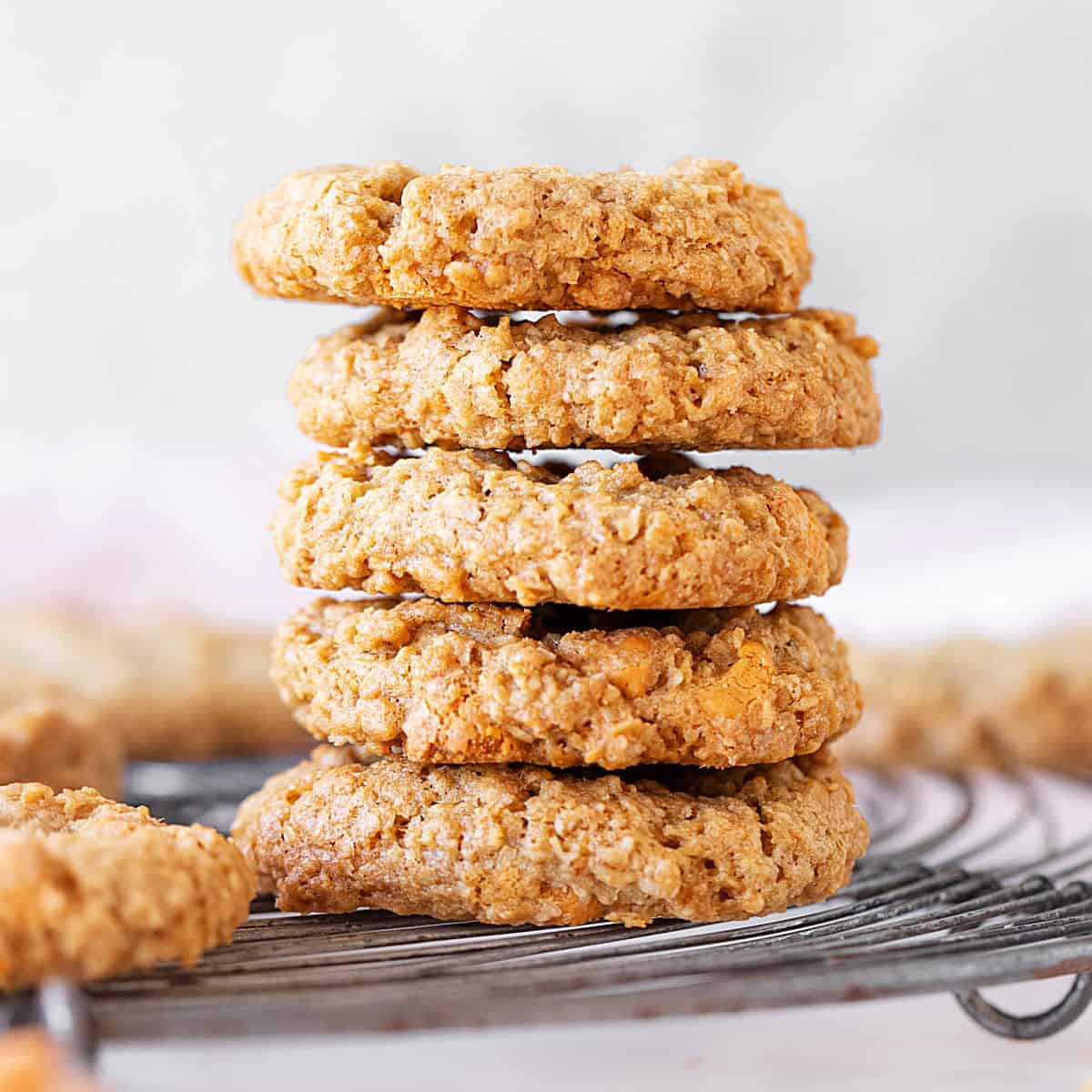
Old-fashioned Scotchies
No matter the time of year, we're always baking cookies. And come the holidays or a celebration, it's the perfect homemade gift. I'm sure you'll love this sweeter and more festive twist on one of our favorite cookie recipes, these chewy oatmeal cookies. Who doesn't love them?
This oatmeal butterscotch cookie recipe travels well, and the dough can be frozen if you want to make it ahead and then bake fresh cookies as needed.
Oatmeal cookies can have a plethora of add-ins, and they all work so well, like the oatmeal cookies with chips and walnuts, our most popular cookie recipe.
It's a perfect canvas for different flavors. Butterscotch adds a fantastic caramel tone.
- Very easy to make: you just mix the ingredients in one bowl. I recommend an electric mixer to make the process easier and faster, but you can make them by hand with a whisk, a large bowl, and some arm muscle.
- Flavor: They have a caramel undertone and just enough sweetness to let the flavors of the oats and chips come through.
- Chewy texture: if stored properly, the texture remains wonderful for a few days. The key is baking them *just* until they are dry but slightly soft in the center.
- Make ahead: you can keep the cookie dough refrigerated for up to a day before baking it. Or freeze the unbaked cookie balls for up to a month and bake them directly; there is no need to thaw them!
Step-by-step VIDEO
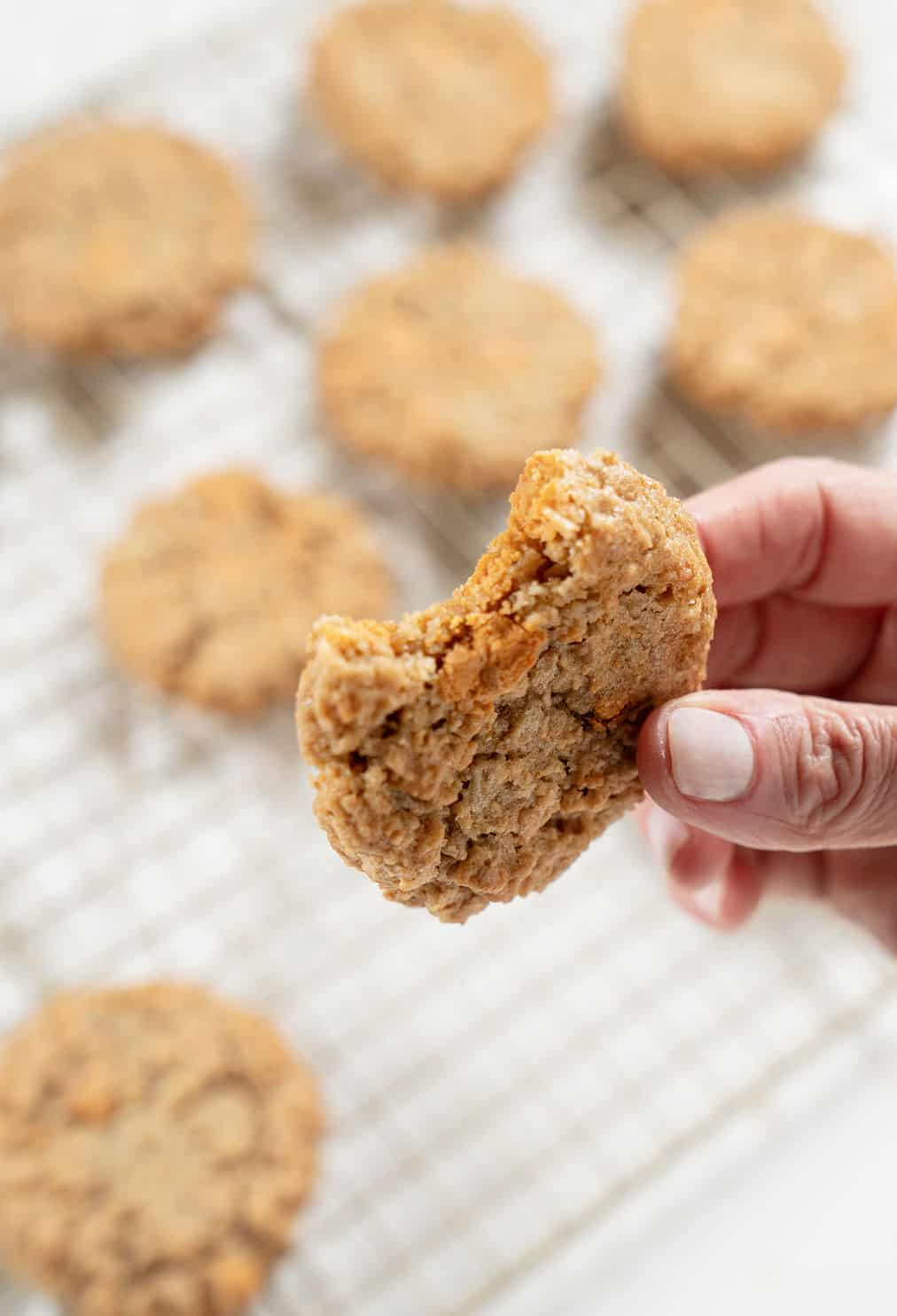
Ingredient Notes
- Oats: they give crunch to the top layer. I use old-fashioned rolled oats (traditional oats) because they have more texture, but you can use instant or quick-cooking oats.
- Sugar: we use that magic combination of white and brown sugar together. You can use only light brown sugar, but I don't recommend using only white as the cookies lack a bit of that deep caramel flavor.
- Butterscotch chips or morsels: they have a caramel flavor and are readily available at many supermarkets and online.
- Baking soda: make sure it isn't expired.
- Milk: You can use whole or reduced-fat milk or alternative ones like almond milk.
Quantities are listed in the recipe card towards the end of this post. The Ingredients page has more details and lists the brands we use.
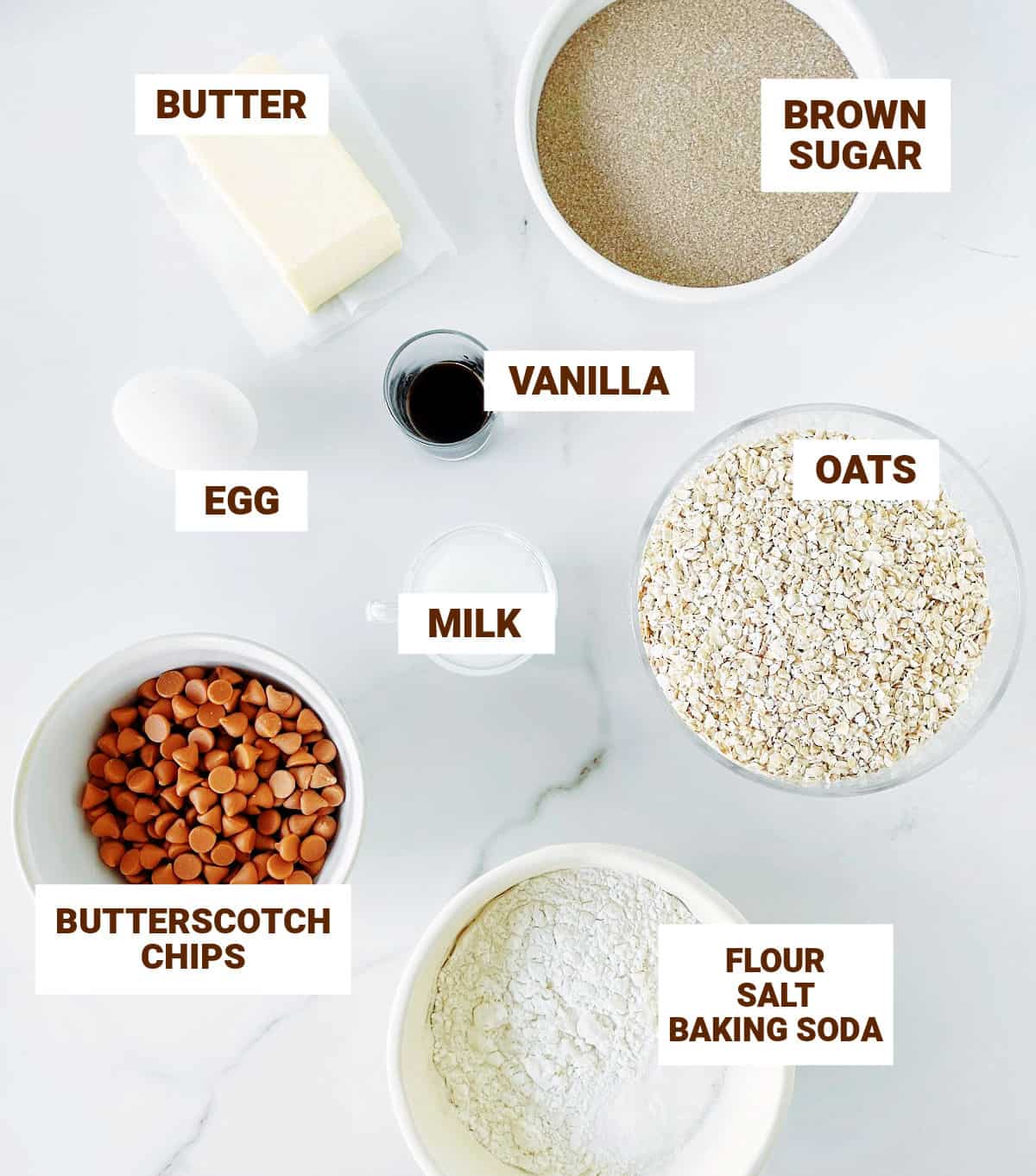
Type of oats
There are 2 types of oats good for making oatmeal cookies:
- Rolled oats: also called traditional or old-fashioned oats, are medium-sized and shaped like irregular discs (image below). It's the one in the box we grew up with that is used to make porridge, the best granola recipe, or oatmeal muffins. This is the most commonly used oat and a sure way to get good results.
- Instant oats: also known as quick oats, are more processed than the ones above. I find that they lack enough texture, but you can use them.
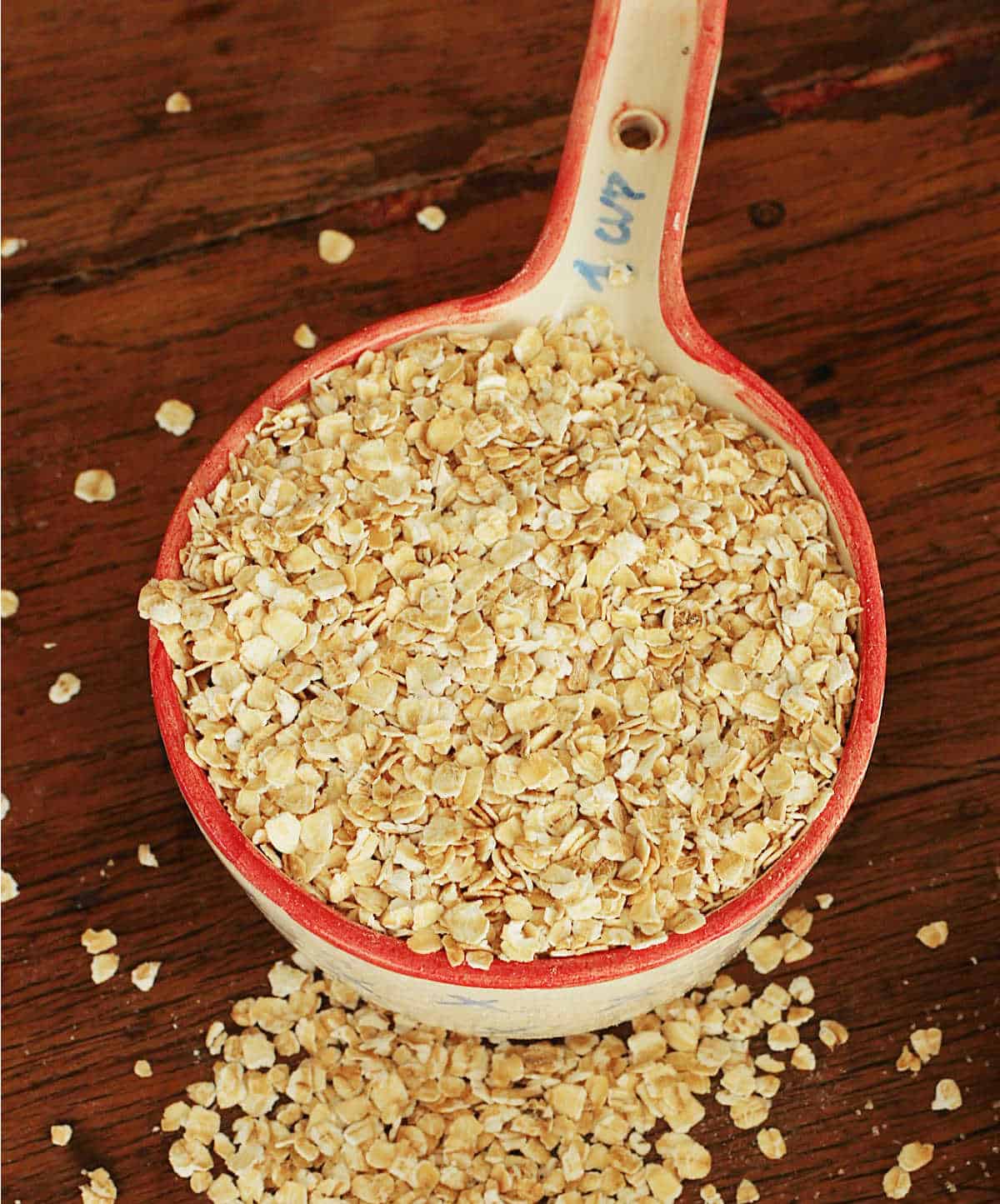
One of my favorite things about this oatmeal cookie recipe is that the base mixture (similar to chocolate chip cookies) is super simple to make.
- Mixers: a hand-held electric or stand mixer with the paddle attachment will make this process easier. The cookie dough must be mixed for several minutes at the beginning, which is harder to do by hand.
- Creaming: the butter must be soft and well mixed with the sugar until very creamy. Add the sugars gradually to incorporate them better, especially if using an electric mixer.
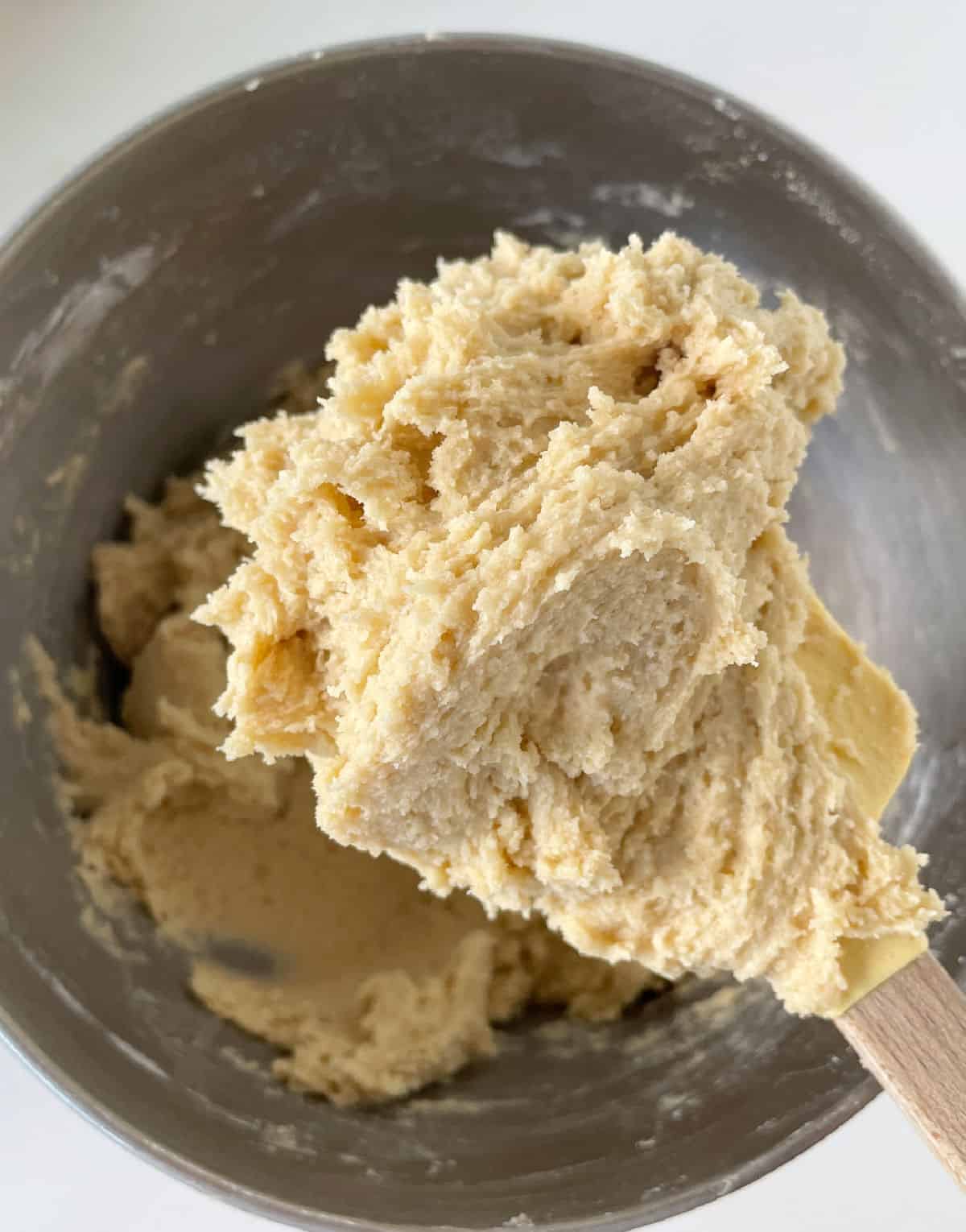
- Adding the egg: don't overlook this step and take the time to beat it for several minutes. It will help the cookies' texture and shape. The dough should be soft and creamy.
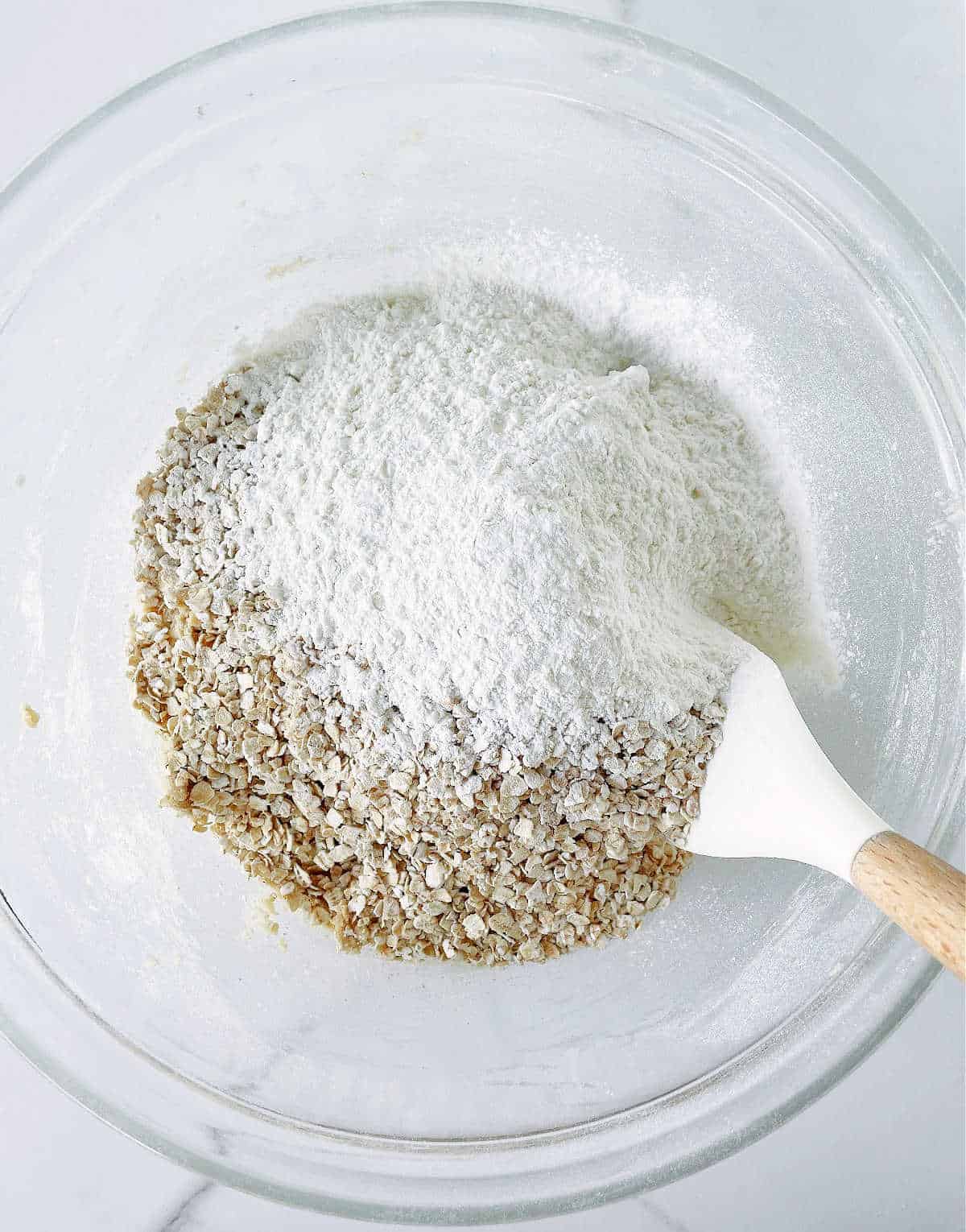
- Add the sifted dry ingredients. You can do so in stages to make it easier to integrate. Add them at low speed. We don't want to develop the gluten after adding the flour, so it needs to be mixed until well incorporated, but no more than that.
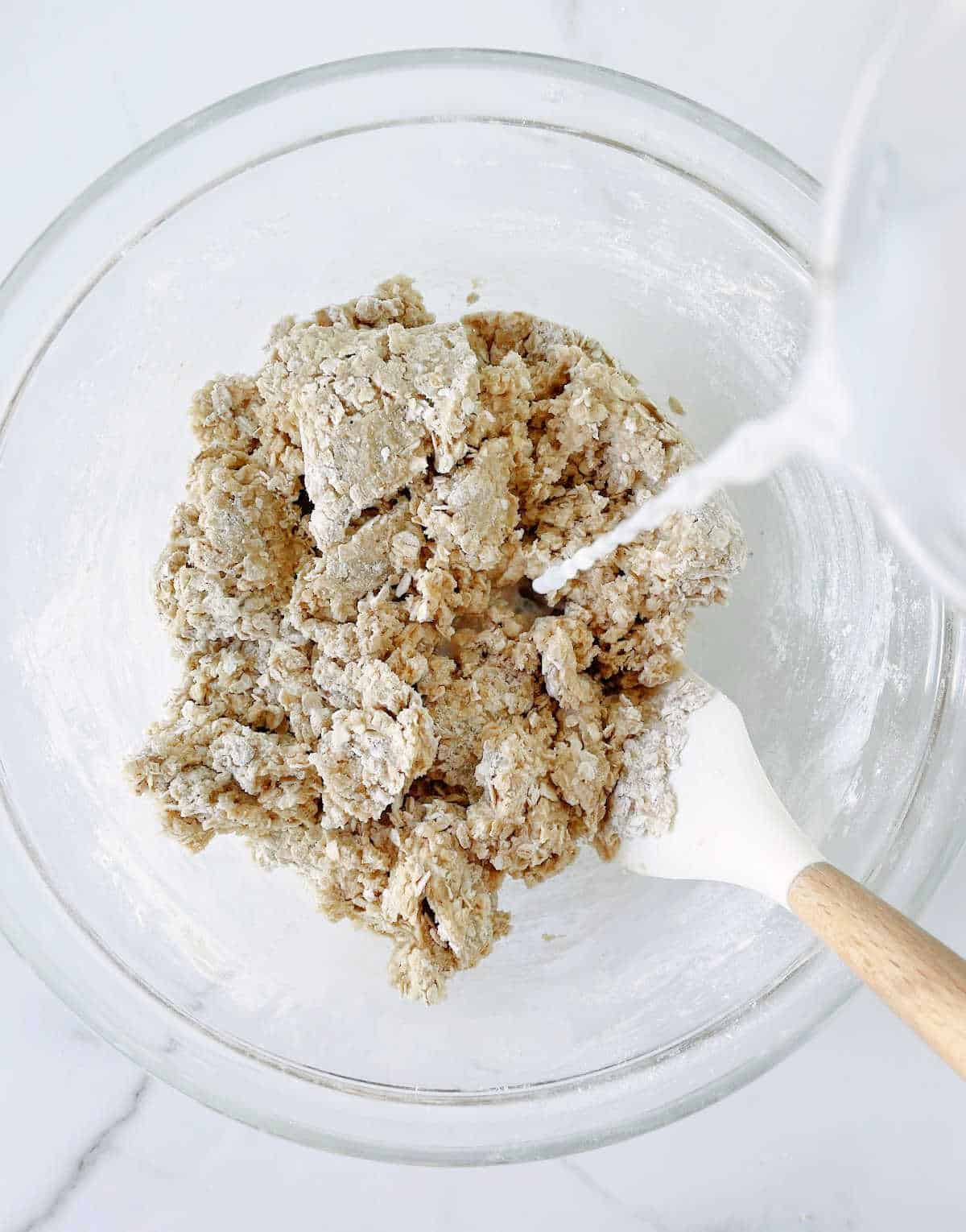
- Add the milk before the flour is fully incorporated. It will be easier to mix.
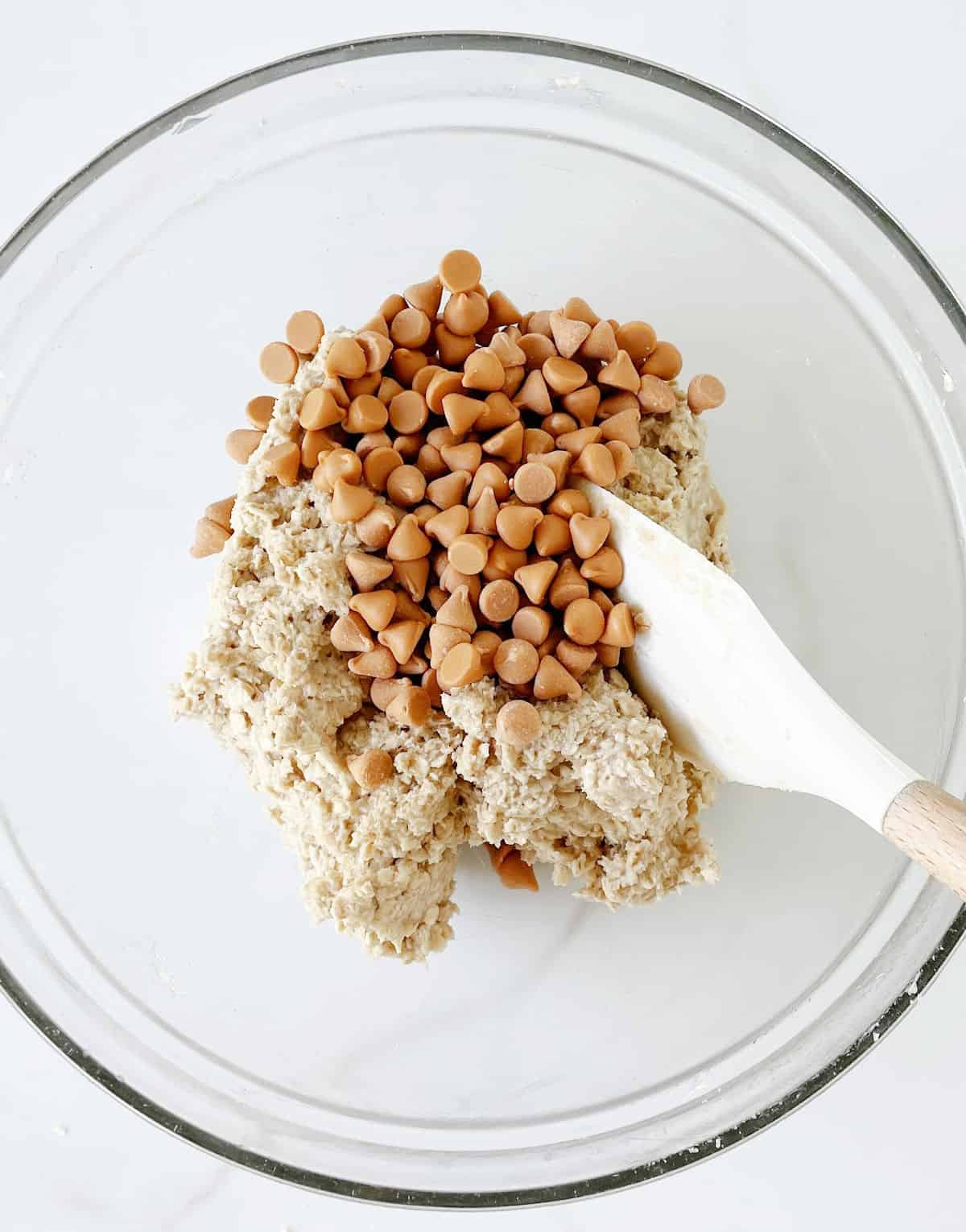
- The chips are added at the end. You can bake the cookies immediately, cover the dough, and refrigerate it for a day.
Vintage Kitchen Tip
If baking the cookies after they've been chilled for several hours or a day, press them lightly before baking them. The oats will have absorbed the liquid, and the dough will be stiff. So the cookies will spread very little in the oven.
Baking
The final cookie dough is very thick, there are no traces of dry ingredients, and the chips are well distributed.
Chips: you can mix all the butterscotch morsels into the dough or leave some of them to add manually to each scoop.
The flavor will be the same, but having the chips on top makes the flavor more easily recognizable (suitable if you're serving or gifting several types of cookies) and maybe prettier. However, they are rustic cookies.
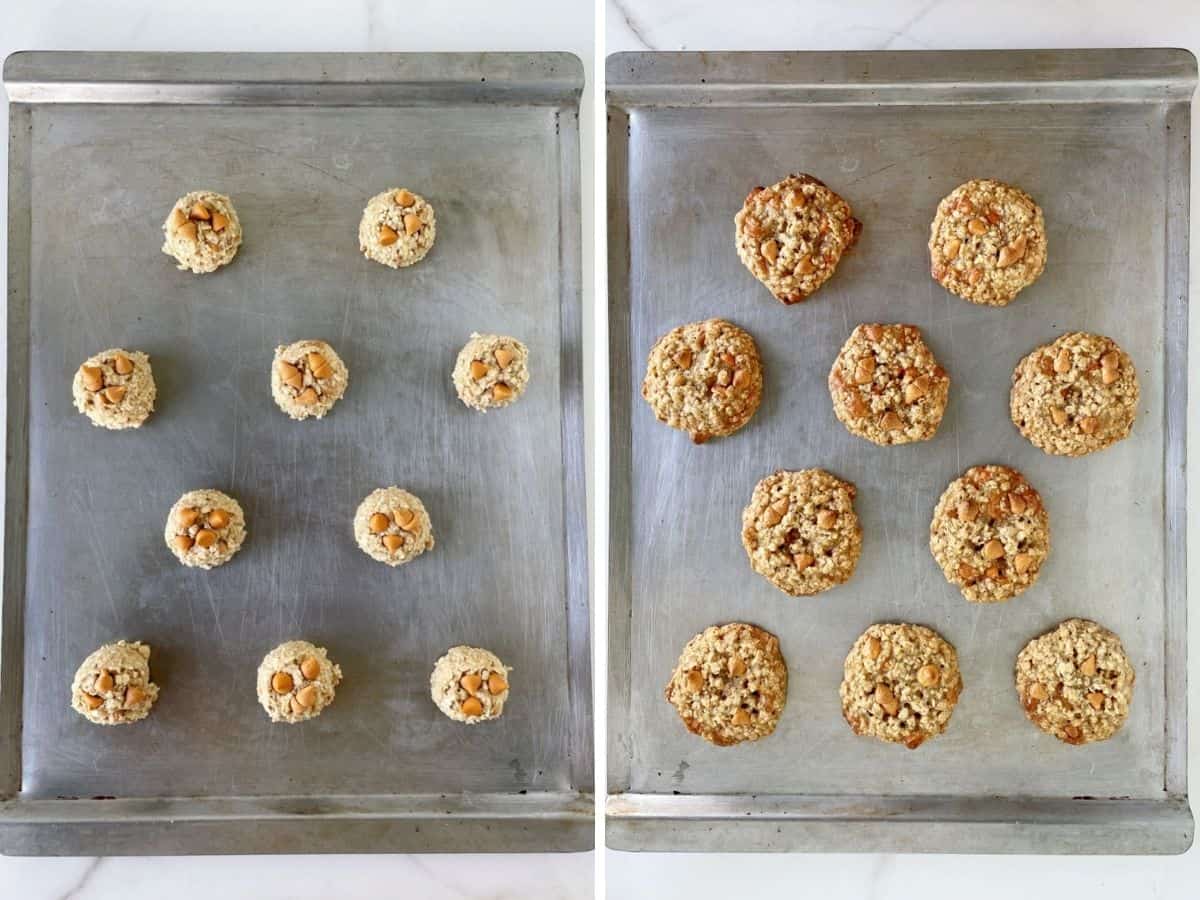
FAQ
The most probable cause is the butter being too soft or almost melted. This might happen with the butter you use when making the batter and also if the batter is left out at a high room temperature before baking. When this happens, the cookies spread too much before the edges bake.
Refrigerating the cookie dough before baking will prevent them from spreading too much. Check that the oven temperature is right; a low oven might have the same negative result.
Freezing
This is one of the best ideas not only for holiday baking but also for baking fresh butterscotch oatmeal cookies when you feel like it.
- Quick freezing: my favorite way is scooping the cookies and popping the cookie sheet directly into the freezer until you want to bake it. This is great when making them within a few hours or a day. No need to defrost them. Simply bake them directly from the freezer. They might take an extra minute of baking.
- More extended freezing: cookie dough can be frozen for a month, and if this is your intention, scoop the cookies in the same way as the image below, but don't leave space between them. You will be able to pack probably the whole recipe in one sheet. Put the sheet in the freezer and when the mounds are rock solid, transfer them to a bag and remove the cookie sheet from the freezer. This way, you'll save a lot of space.
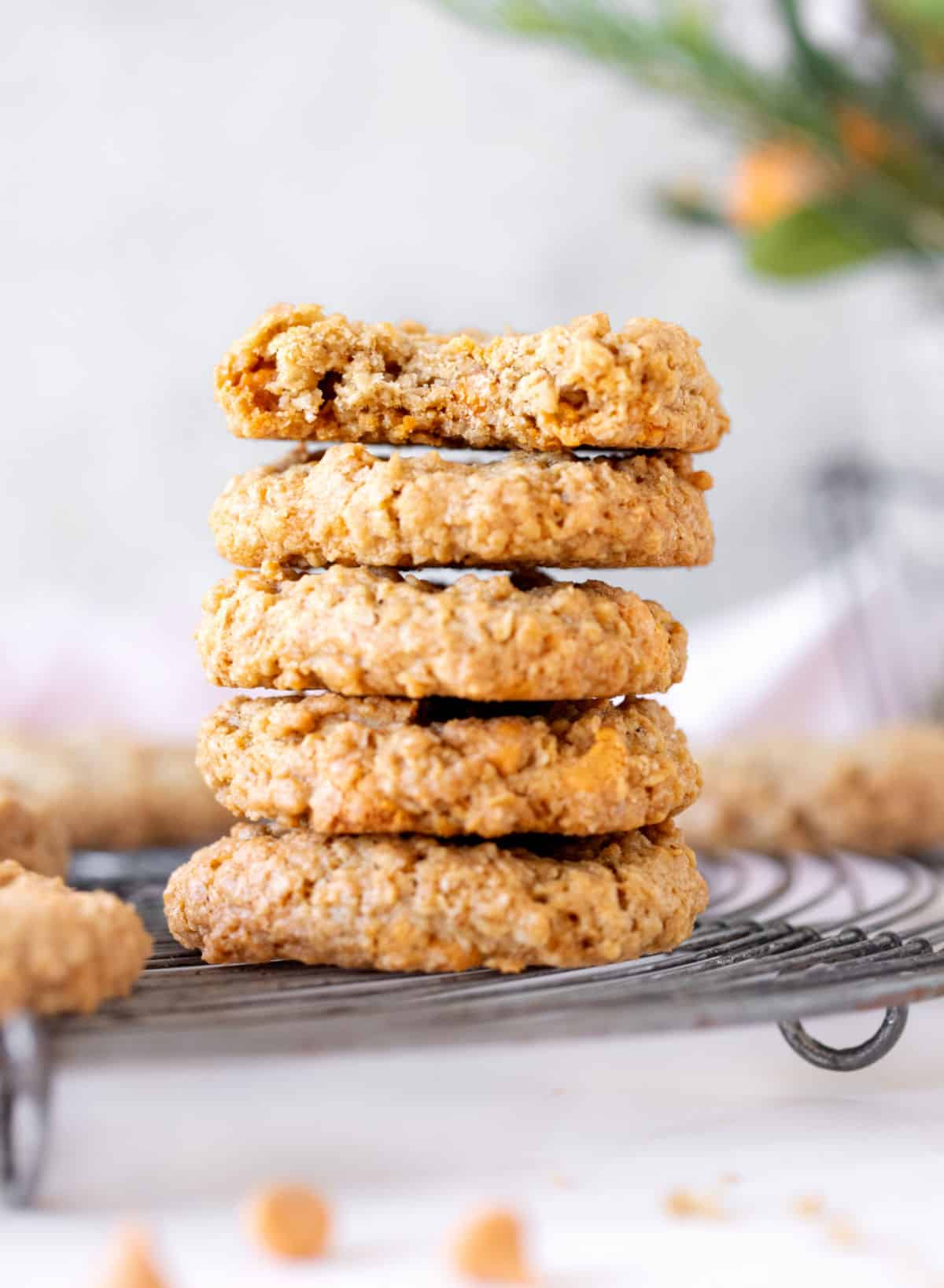
Kitchen notes
- Organization: read the recipe first and ensure you have ingredients at the correct temperature, utensils and equipment needed, and enough workspace. This will make the process so much easier.
- Baking time: keep in mind that all ovens and pans are different, even if they look the same or very similar. The baking time in my recipes is as accurate as it can be, but it might take you more or less time. You can use an oven thermometer (like the OXO thermometer) to check that your oven is at the right temperature. I recommend you keep track of how your oven works and what tiny details you might need to adjust.
- Measuring the cookies: Use an ice cream or cookie scoop so that you're cookies bake evenly. Leave roughly a 1 or 2-inch separation between each (depending on the size), so they can spread comfortably during baking.
- Refrigerating the dough: I don't chill it and bake the cookies directly. The texture is fantastic. But the type of oats you use might differ from mine as they can vary depending on what part of the world you live in and what brand you buy. You should not have issues with quick-cooking oats because they hydrate quickly. With rolled oats, I recommend you test a few cookies first and see how they come out. Letting the dough rest from 1 hour to a day might help to make moister and softer cookies. The oats will soften with the extra hydration time.
- Baking: If making the cookies immediately, scoop them and bake them. If the cookie dough has been refrigerated for several hours to a day, it will be firmer, even after it reaches room temperature. Lightly press the top of each cookie before baking. When the dough is stiff, the cookies don't spread as much.
- Room temperature storage: as with most cookies, they can be stored in airtight tins or cookie jars. They usually become softer as the days go by. If you leave them outside, they will harden with the passing hours.
- Variations: add ¼ teaspoon ground cinnamon or use half butterscotch and half chocolate chips like we do for these chocolate butterscotch cookies. It's a fantastic combination!
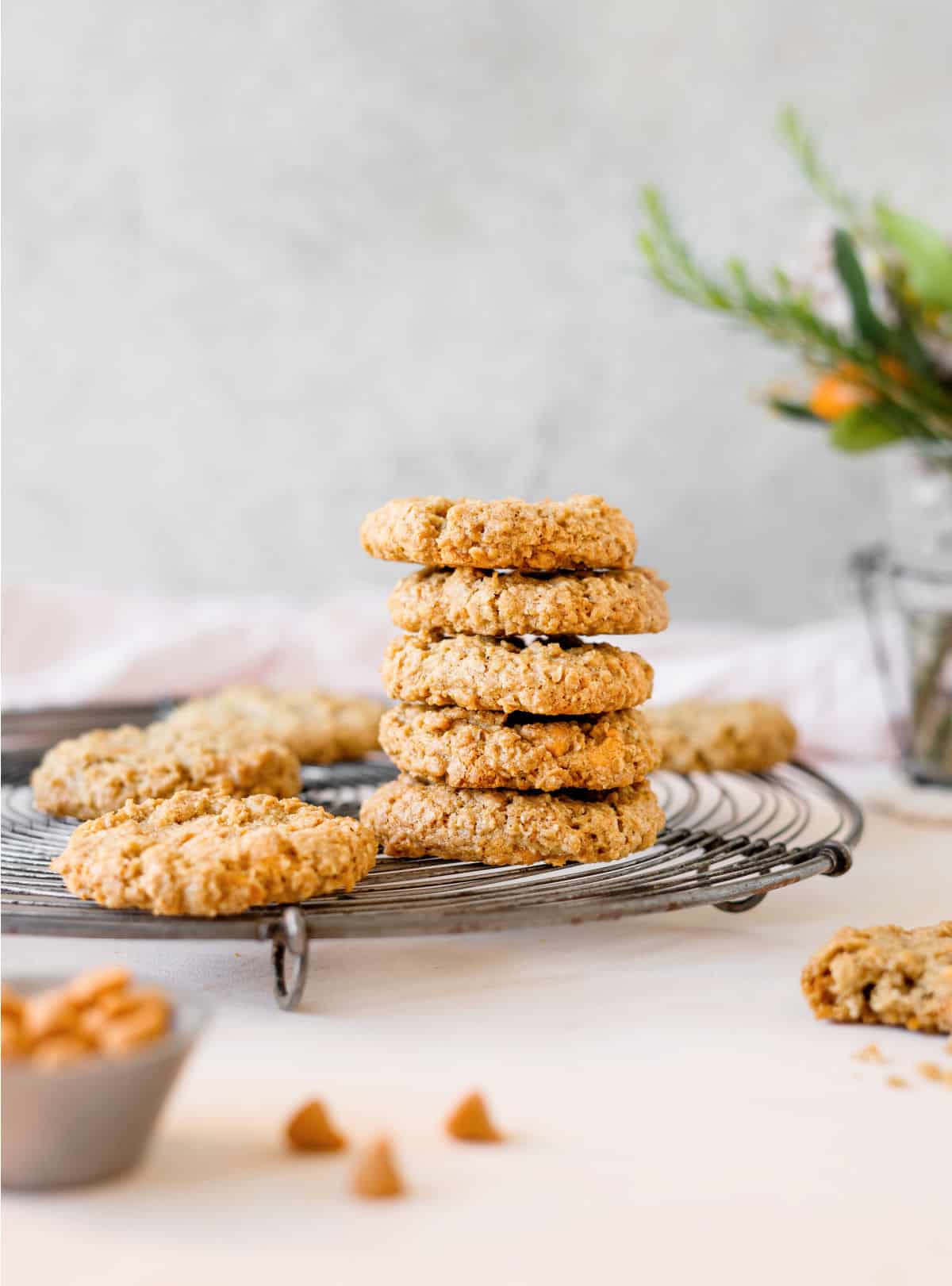
Related recipes you might like:
Before you go
If you made this recipe and loved it, you can comment below and leave a five-star ⭐️ review. Also, if you had issues, let me know so we can troubleshoot together.
You can also subscribe to our FREE email series 'Baking the Best' and our regular newsletter. Or follow and save my recipes on Pinterest.
As an Amazon Associate, I earn from qualifying purchases. Read my disclosure policy.
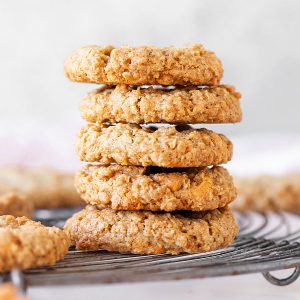
Chewy Oatmeal Butterscotch Cookies
Ingredients
- ¾ cup unsalted butter, at room temperature
- 1 cup brown sugar
- ½ cup white sugar
- 1 egg, at room temperature
- 1 teaspoon vanilla extract, or ¾ teaspoon vanilla paste
- 3 cups old-fashioned rolled oats
- 1 ¼ cups all-purpose flour
- ½ teaspoon baking soda
- ¼ teaspoon salt
- 2 tablespoons milk
- 1 cup butterscotch chips or morsels, I use Nestle Toll House butterscotch morsels
Instructions
- Preheat the oven to 350ºF (180ºC). Line cookie sheets with parchment paper or butter the pans.
- Beat soft ¾ cup unsalted butter with 1 cup brown sugar and ½ cup white sugar in a large bowl 2 minutes, until smooth.
- Add 1 egg and 1 teaspoon vanilla extract, and beat for 3 minutes.
- Add 3 cups old-fashioned rolled oats, 1 ¼ cups all-purpose flour, ½ teaspoon baking soda (sift it to avoid lumps), and ¼ teaspoon salt. Mix just until incorporated.
- Add 2 tablespoons milk and mix until well incorporated. Add 1 cup butterscotch chips or morsels and mix well.
- Bake them immediately or refrigerate the batter for 1 hour and up to a day. See Notes below.
- Scoop walnut-sized balls (I use a small cookie scoop, 1,57-inch diameter) on the prepared sheets, leaving space between them, about an inch and a half. If using refrigerated dough, flatten slightly on top.
- Bake for 10 to 12 minutes, until golden and beginning to firm around the edges, but the center is still soft. If you want crunchier cookies, bake them for a minute or two more.
- Cool for a few minutes on a wire rack before lifting them carefully from the paper and cooling them completely.
- Keep in tins, cookie jars, or airtight containers.


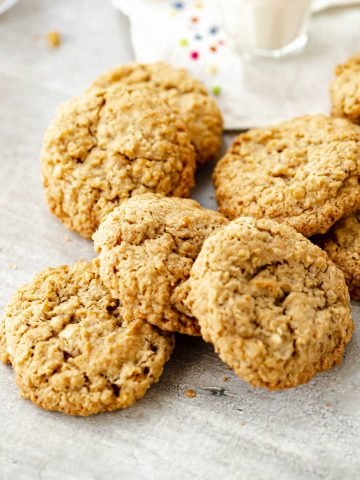
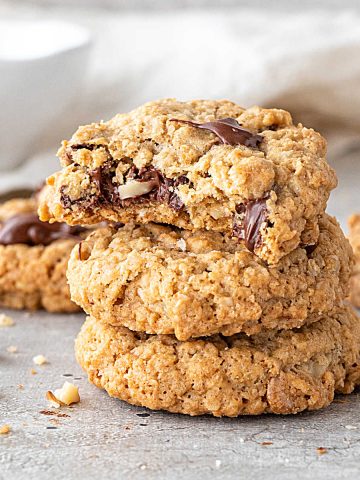
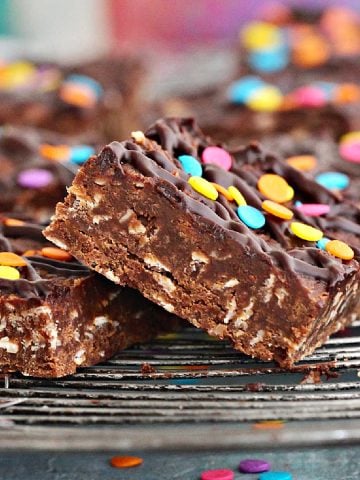
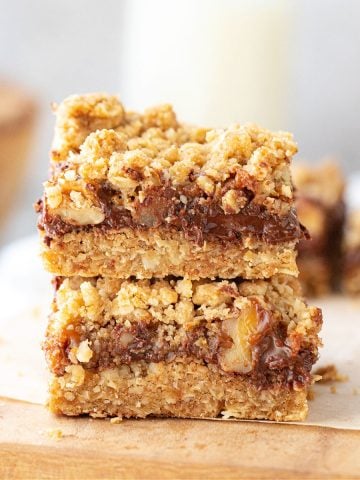
Susan says
The cookies are delicious: however, next time I make these, I will add additional butter. The dough was dry and crumbly and the cookies didn't spread. They came out in the same scoop shape that they were when they went into the oven.
Muna Kenny says
The cookies look perfect and chewy. I would love to try your recipe!
angiesrecipes says
Thick, soft and chewy...these oatmeal cookies are perfect for me!